Ed Burrows meets the Walsh brothers and the Series I Land Rover they restored then compared to an Austin Gipsy.
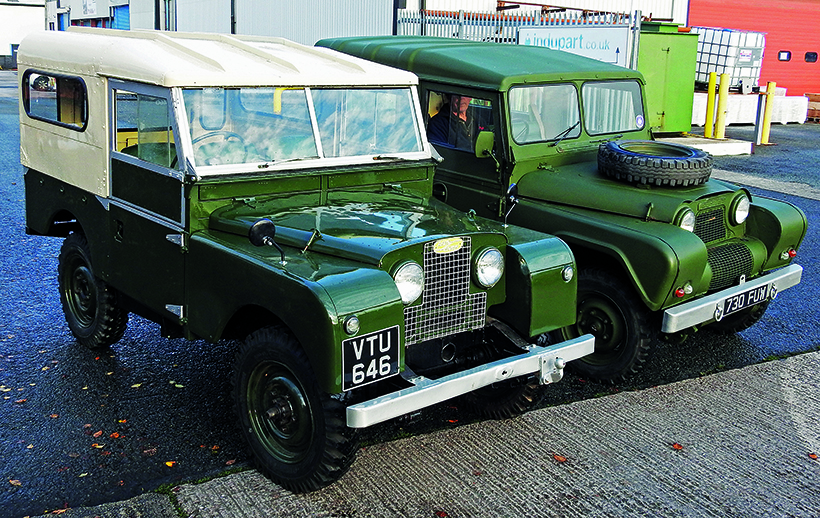
With a front cover fanfare, a motoring weekly recently acclaimed Land Rover’s revival of the old-style Defender, taken out of production in 2016. But all was not quite as it was hyped. The 110 Station Wagon body conceals an extended Rally Raid off-road racer structure fabricated by Bowler, a Jaguar Land Rover motorsport subsidiary.
The price is circa £200,000, and they’re only expecting to sell a couple of dozen. With the five-litre, JLR supercharged V8 producing 575hp, it’s a stonking eleven-and-a-half-times more powerful – repeat, eleven-and-a-half-times more powerful – than the 50hp generated by Land Rover’s original, 1948-1951-spec model; the first version of what became known as the Series I.
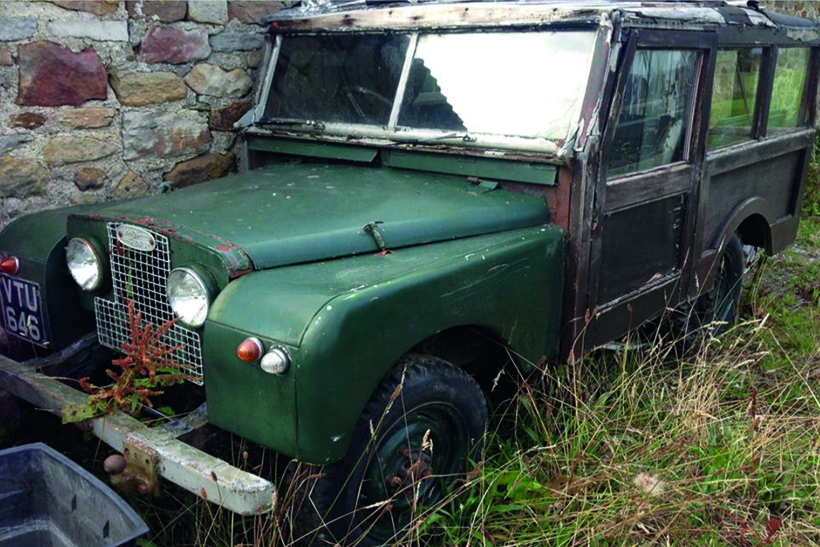
Land Rover background
Launched at the 1948 Amsterdam Motor Show, the Series I had the distinction of being the world’s first, mass-produced 4×4 aimed at the civilian market. Rover’s technical director, Maurice Wilks, used an ex-military Jeep on his farm. He decided it could be improved upon, and would make a useful diversification for Rover’s factory. Being a farmer, he recognised the value of a robust, four-wheel-drive with a power take-off – actually two, one at the front and one at the back. And, unlike the Second World War Jeep, it had doors, and seated three in the front.
What was conceived as an agricultural vehicle soon gained the attention of the army. With its simple practicality, the powers that be decided that the Land Rover represented a better bet than the Austin Champ. Purpose-built for military service, with its independent suspension and other features advanced for the time, the Champ was a Rolls-Royce among light, military vehicles – and literally so; it was powered by a Rolls-Royce B Series four-cylinder petrol engine.
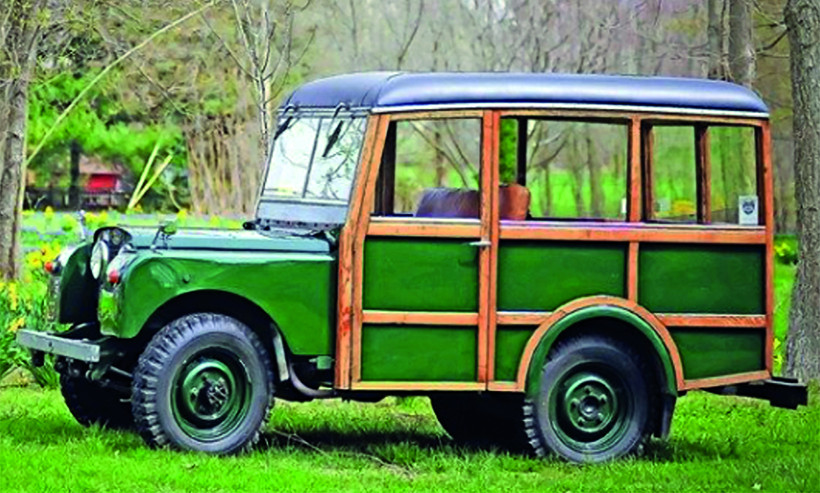
The specification of the Land Rover’s first iteration included an 80in wheelbase and a four-cylinder, 1.6-litre petrol engine shared with contemporary Rover cars. Drive to all four wheels – via a two-speed transfer box – was semi-permanent, with a freewheel that de-coupled the front axle on the overrun. A ring-pull in the footwell enabled the freewheel to be locked.
In 1952, production switched to the two-litre version of Rover’s four-cylinder car engine, and the transmission system was re-engineered with drive to the front axle through a dog clutch. For 1954, the wheelbase of the base model was extended from 80in to 86in. This was increased again in 1956, dictated by the need to move the front cross-member forward to accommodate the first Land Rover diesel, the 52hp unit introduced in 1957. The following year the Series III superseded the Series II – and the launch of a rival, the Austin Gipsy.

Series I search
North Wales historic vehicles collector Brian Owen decided he wanted a 1955 Series I. The year was important. It was in 1955 that his father founded the Ivor Owen & Sons haulage business run, these days, by Brian and other family members.
To make sure his grandson, Ifan, is seriously infected with the classic vehicle restoring and collecting virus, Brain wanted to give the young man the Landy for his 17th birthday. Starting with a Series I when he was 17, Brian has owned every model of Land Rover up to the Defender. In turn, Rob – one of Brian's sons – and Ifan’s father – still owns the early Series I he’d received on his 17th birthday. This has been customised and fitted with a 2.5-litre turbodiesel, out of a Land Rover Discovery TDi.
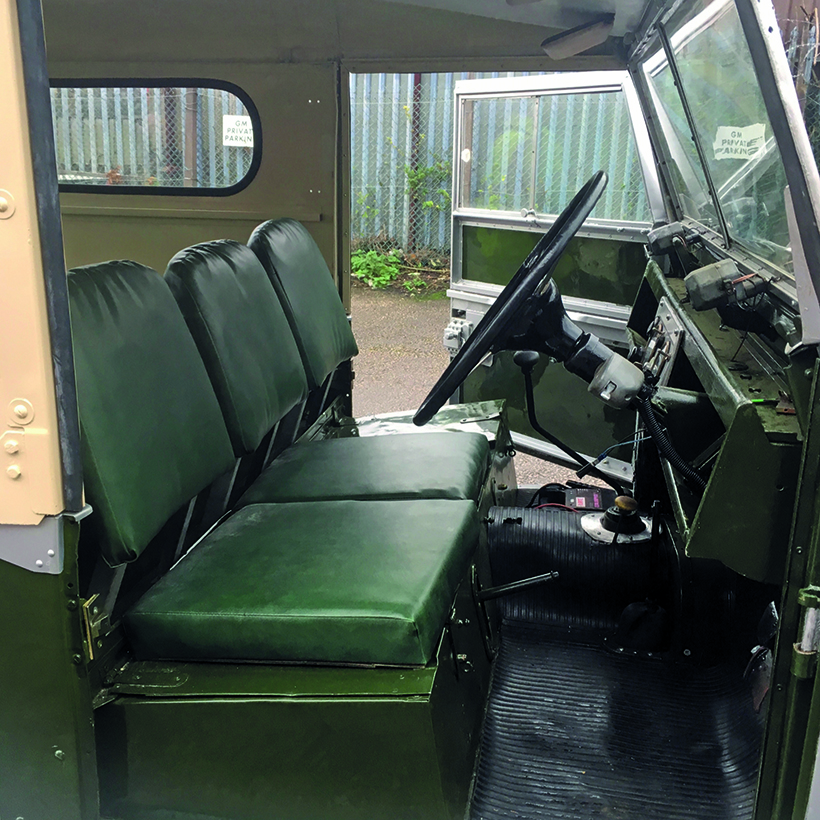
The Owens are good friends with Ken and Ray Walsh, the Manchester hobby restorers well-known for turning wrecks into rebuilds in record time. Talking with Ken, Brain said that the Land Rover would be perfect as Ifan’s first drive. “If you come across one for sale, give me the nod, will you?” You can imagine how the conversation progressed. “I don’t know about that, pal,” Ken responded. “Don’t you know that modern cars and trucks have synchro on first and second?
“You’re really pitching the lad in at the deep end. This is baptism by fire. The seats don’t adjust. The steering wheel’s up in the air, and takes some getting used to. Wouldn’t you be better off equipping him for the future? If the government has its way, it won’t be long before the roads are flooded with battery vehicles – with no need for a gearbox. Better off buying him a milk float!
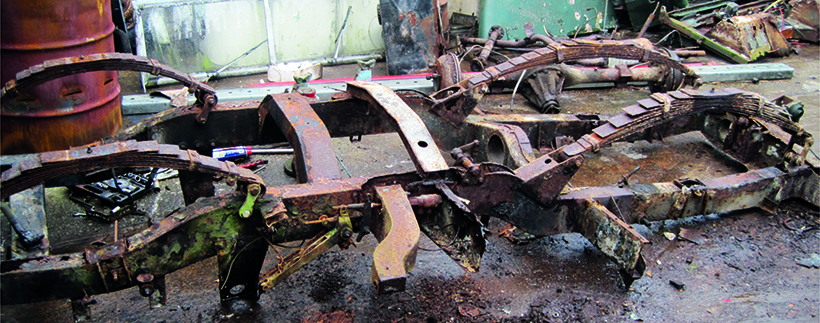
“And, don’t you want great grandkids?” Ken continued. “The lad won’t have much luck attracting girlfriends if he offers to pick them up for a date driving an old Land Rover. I mean, OK, you’re Welsh. But I bet even a North Wales village girl’s idea of a Land Rover is one of those flash, luxury four-by-fours.”
Quips aside!
Brushing Ken’s quips aside, Brain said he wanted to find one with a bit of Welsh history attached to it. “Land of its fathers!” he exclaims. “Maurice Wilks invented the Land Rover while he was working on his farm in Anglesey, and chatting to his brother, Spencer. Damn it, Ken – the Land Rover was born in Wales!”
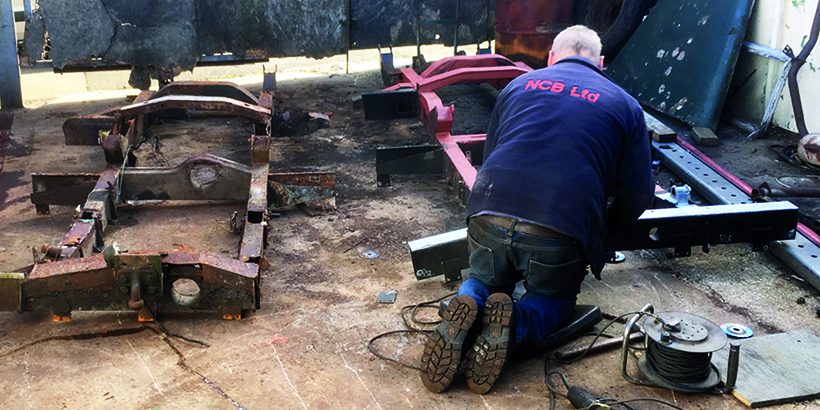
“Alright, if we come across one, we’ll let you know,” said Ken. “Our Ray practically lives on eBay. Tell you what, you look as well. If you want one that’s had a Welsh previous owner, you’re more likely to find one than we are. D’you have the internet in Wales? You won’t get on eBay without it.”
“Jest all you like,” said Brian. “Whichever of us finds it, assuming it’s what you call ‘nice and bad’, I want you two to restore it. Will you do that for me?”
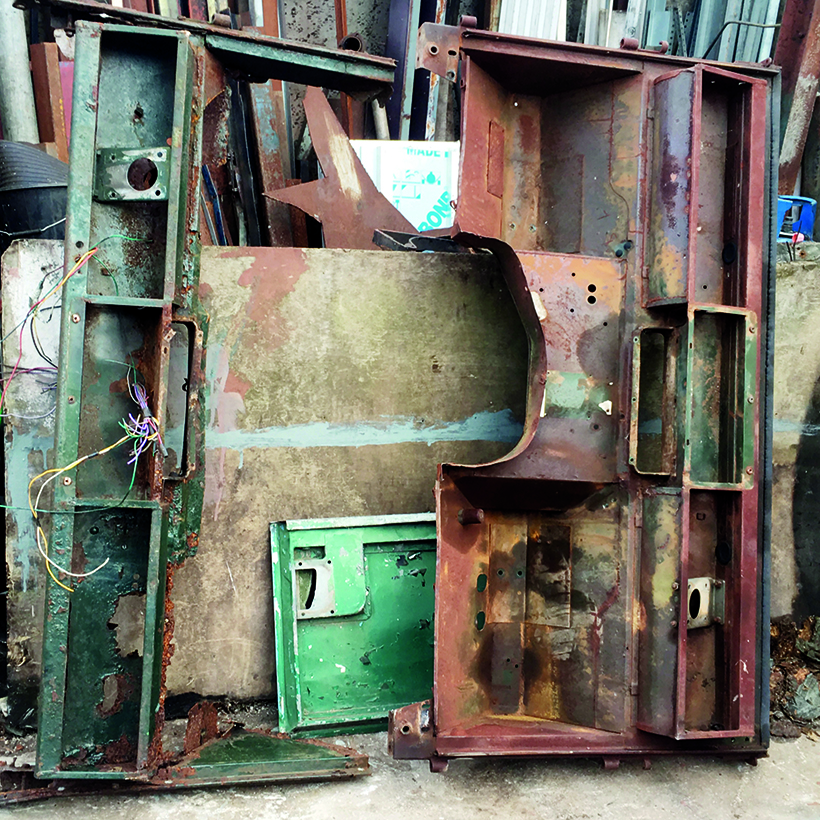
“Brian, you know we will. But let’s find one soon. It’ll be a useful lockdown fill-in until we find our own next big project. And we’ve never done a Land Rover before. That ticks another box – as you know, we deliberately avoid vehicles we’re familiar with. There’s no challenge. And it’ll be interesting to compare it with our Austin Gipsy.”
The Walshes restored their 1964-vintage Gipsy during the last quarter of 2019 – it was featured in the February 2020 issue of Heritage Commercials. Over the past few years, Ken Walsh and his brother Ray have done three bare chassis strip-down restorations for Brian Owen. The first was a Leyland Clydesdale tipper, while a Thornycroft Sturdy Star was finished earlier this year. They’ve also restored a Mercury factory yard mini-tug, given to Ifan as a birthday present, a couple of years back.
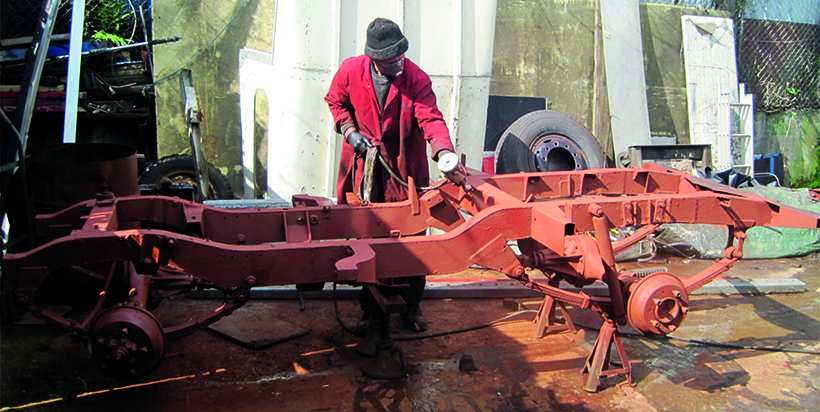
Brian Owen also has a Sherpa van restored by the Walshes. Having nothing else on at the time, they did it as a fill-in until something more interesting turned up. Its condition when they stated would make it about the worst wreck you’d find in a scrapyard. “The fun was seeing if we could save it,” chuckled Ken.
Sherpa support
When Brian first heard about the Sherpa, he decided it would make a good support vehicle for the Owen family’s growing heritage fleet. “When they’d finished it, it looked better than new. I simply had to have it – if only to honour what Ray and Ken started with – and the quality of what they achieved. The very idea of taking it on was preposterous. To call it a wreck would have flattered it. They are irrepressible lunatics. What the Walshes do in a matter of weeks or months is ridiculous. It puts British industry to shame.

“Hey – I’m only a part-time pensioner,” quips Ken. (To clarify: he’s a non-executive director of luxury coach and Manchester school bus fleet operator Belle Vue, and serves in an advisory capacity).
Earlier this year, Brian Owen was talking to a friend who had a Series I. He’d owned it for 23 years, but hadn’t been able to give time to restoring it. As luck would have it, it turned out to be a 1955 example – the very year Brian was looking for. It was sold to Brian on condition that it was rebuilt, not left to rot. It had come off a farm in North Wales, and had a coachbuilt, shooting-brake body by Tickford. This was rotten to the core, and Brian’s friend had got as far as removing it and installing a standard aluminium hardtop. Surprisingly, underneath the Tickford coachwork was the Land Rover’s regular aluminium alloy side panels.
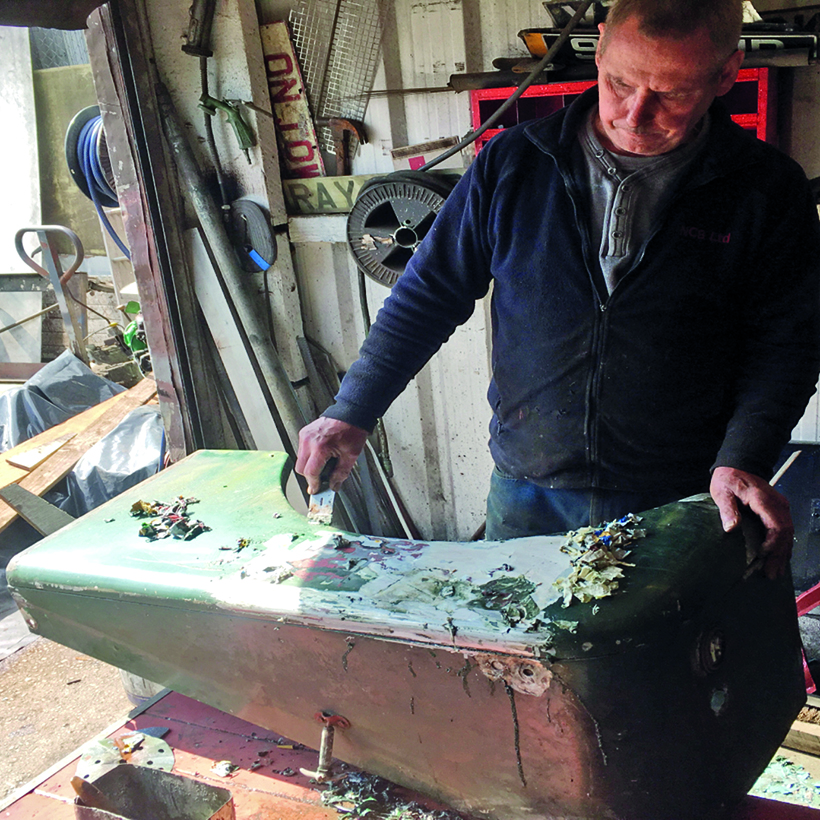
When Brian phoned the brothers with the story, Ray’s eyes lit up with the prospect of re-creating the Tickford body. A retired plumbing and heating engineer, over the years he’s mastered the art of wood-frame coachbuilding. But it wasn’t to be. Although Brian had been given a photograph showing the external timber structure, faithfully reproducing the Tickford coachwork would require seeing an example and taking accurate measurements – assuming one of the 650 built still exists. But the pandemic put paid to that, even if one could have been located.
As usual, having agreed to take the restoration on, the brothers were keen to get a move on. While Ray was not over the Moon about losing the chance to exercise his coachbuilding skills, this was soon compensated for by the need to apply his knack for winning eBay auctions. Because almost as soon as they commenced their initial survey, it was obvious the chassis and bulkhead – the main structural components – were too far gone to be saved.

Beyond repair
“The chassis was beyond repair,” commented Ken Walsh. “So was the bulkhead, and we had to scrap the fuel tank and fuel lines, all the lamps, the wiring loom, the battery, the hoses and clips, the windscreen and side windows, the front seats, the exhaust system, front and rear shock absorbers and the complete braking system – wheel cylinders, master cylinder, the brake shoes, brake pipes and flex hoses. But apart from that, what was left was OK – we could repair and reuse.
“We asked around within the Land Rover community about what a Series I was like to restore and, having explained about the condition, people were quoting us figures of up to £30,000.” The Walshes are notorious tightwads. “Wherever possible, we fix things ourselves. Mostly, the only cost to us is time. And once we start, it’s all-out war. We only pack up for the day when a particular job’s finished.
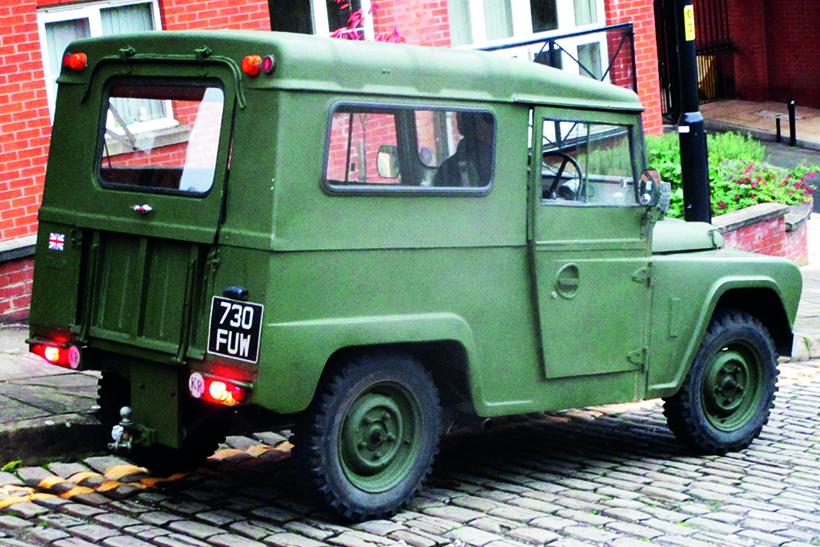
“Also, we do restorations for fun, not for commercial gain. The odd restoration we’ve done for other people is on condition we like them, and the type of vehicle is rare or has an interesting history, and it’s not one we’ve done previously – that would be too easy. And we’re not interested unless it’s in very, far-gone condition.”
The first job was the complete disassembly of the vehicle. Until the chassis frame and front bulkhead replacements had been found, the main jobs they were able to get on with were making good the floorpan, side and rear bodywork, doors, front wings and bonnet. These, of course, are aluminium, whereas the chassis and bulkhead are steel.
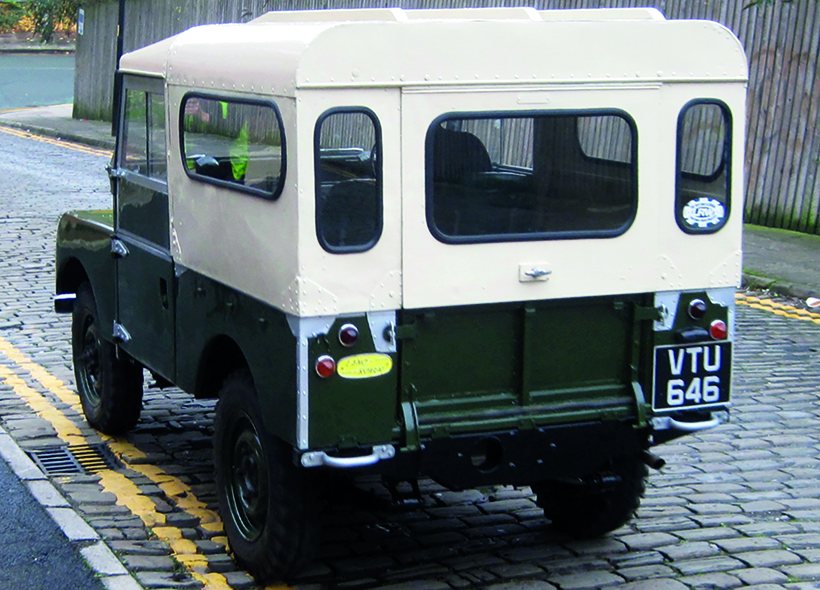
“It took Ray a week just to strip the paint off the inside and outside of the hardtop,” Ken continues. “The paint on the body panels was baked on harder than almost any vehicle we’ve worked on. All credit to the old Rover Company, but not such good news for Ray, who managed to strip a few layers of skin off his fingers in the process! Fortunately, we’d stocked up with masking tape. It makes very good bandages.”
Ray spent his evenings on eBay searching for a chassis, bulkhead and other odd parts. They’d been quoted between £500 and £1,200 for a chassis by various Land Rover parts specialists. Then, one night, bingo! He won a bid for a chassis for £149.
Parts from Brighton
“I should call him RayBay,” jokes Ken. “But if a thing sounds too good to be true, it usually is. The seller was in Brighton. We had a five-hundred-mile round trip to collect it. Some cross members had been replaced, but it was basically sound, apart from needing a replacement rear cross member and two plates welding to the centre section.
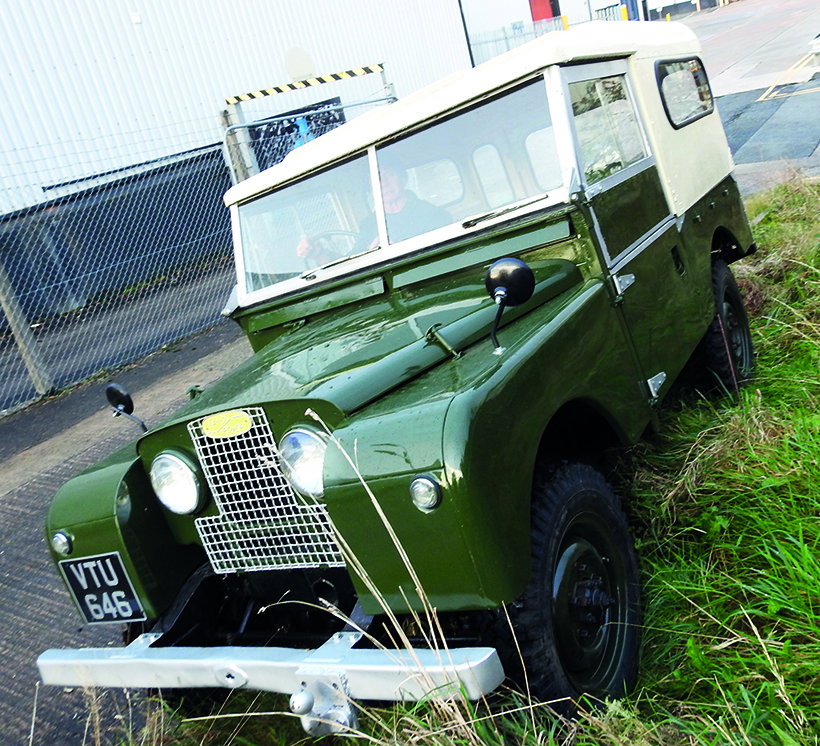
“We got the bulkhead for £1,200, although that meant another trip to Brighton to collect. It was in good condition, and had come off a Series I that had been imported from Australia for stripping down.”
As part of the rebuilt, the dynamo was replaced by an alternator. With the chassis painted, repaired leaf springs and axles fitted and rear panels in place, the engine was installed. “It hadn’t needed much work,” says Ken. “It hadn’t run for at least 23 years. All credit to Rover – it started straight away.
“The only parts we had trouble with were the braking system wheel cylinders. The first two sets had been made in China, and were useless. The seals were poor, and leaked. Almost as soon as we started, this forced an end to a back-to-back trial against our Austin Gipsy. We had to abandon a test run we’d planned up a one-in-six cobbled street in Manchester. The intention was for timed runs to the top – and a hill start. The problem was rectified by fitting Girling units.”
November’s Covid-19 hiatus prevented proper performance comparisons between the Series I and the Gipsy. Other than driving on the road, the nearest thing to an off-road test was on the only patch of land conveniently available to them. This is only 15 or so yards long and two vehicles wide, and banked between 25 and 45°.
“We’ll count that one as a score-draw,” commented Ken. “As a piece of engineering, though, the Gipsy wins over the Land Rover, in my opinion. Our Gipsy is a 1964 Series 4, and nine years younger than the Series I. It’s the version with the 72hp Austin Hereford engine, and independent De Dion tube and trailing arm torsional rubber suspension.
“The chassis structure is all-welded, oval-section steel pressings. It’s unique and very stiff which, with independent suspension, it has to be. It might, of course, just be these two, and their age, but the Gipsy has better brakes; it feels more solid, more robust. The Land Rover feels very light, and its steering is too light for me. Our vote goes to the Gipsy.”
Due to the pandemic and the resulting closure of the England-Wales border, as you read this, Ifan Owen may not yet have received his birthday present. “It won’t be a Happy New Year if he doesn’t master the crash box, says Ken Walsh. “But it’s good to know a young man interested in restoring classics, is keen to learn how things were in the past.”
For a money-saving subscription to Heritage Commercials magazine, simply click here

